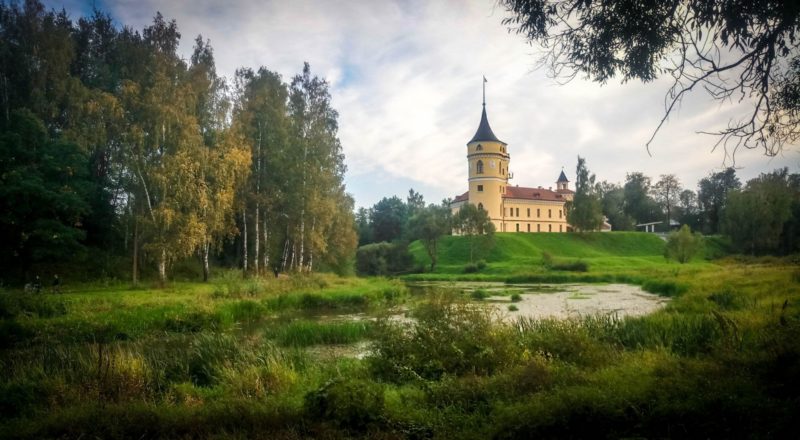Mariental Park (Pavlovsk)

Mariental Park is located in the city of Pavlovsk, 25 km from St. Petersburg. It is bounded by the streets Elizavetinskaya, Gospitalnaya, Mariinskaya and Krasny Kursant. In the central part of the park is the main attraction - the Bip fortress, nearby - the Mariental pond and the obelisk in honor of the founding of the city.
In 1777, when Empress Catherine II presented her son Pavel and his wife land near St. Petersburg in honor of the birth of the heir, the city of Pavlovsk was founded. A year later, on the territory were built two locks - Paulust and Mariental (Maria's castle). In 1790, the Mariental Park was laid out around them, and after 6 years, Emperor Paul, who by then took the throne, gave a decree to build a fortress on the site of the castle of Mary. In 1798, construction was completed, and the fortress was named the Bastion of Emperor Paul, abbreviated as Bip.
In 1793, the Mariental Pond appeared in the center of the park, on the bank of which is an obelisk, set up to the date of Pavlovsk foundation. A gazebo was built, from which a stone staircase stretched to the pond with lion statues on its sides.
During the Great Patriotic War, Bip Fortress and some of the other buildings of the park were destroyed. The fortress was burned out from the inside and remained untouched for a long time, but it was recently restored and rebuilt into a hotel, where tourists are now taking to see Mariental, which is on the list of cultural heritage sites.
Sights
After the war, many buildings have sunk into oblivion - the Admiralty buildings, power stations, the "Krak" house, the hunting booth. But some remained untouched - and this is enough to see the Mariental Park in all its glory.
Fortress Mariental (Bip)
The fortress was built in 1798 in the form of an irregular pentagon topped with two towers, one of which has a clock and a coat of arms of the city of Pavlovsk. Bastions and diverse fortifications were built around the fortress. Inside the imperial garrison was housed, and in honor of the arrival of the ruler, dinner parties were organized, ceremonial salutes and even volleys of cannons were given. In the basements a guardhouse for guilty soldiers and servants was equipped.
After the death of Emperor Paul, a garrison was located in the castle for several years, but later it was excluded from the list of fortresses, and by order of Maria Fedorovna, charitable institutions began to be placed in it.
Mariental pond and stone bridge
Mariental Pond - the central part of the park, was laid out in the valley of the Slavyanka River. The channel of the river was deepened, using the land for filling the coast, and on the territory of the pond during the reign of Pavel they organized mass celebrations, boat trips and sailing rowing.
At the border of the park there is a large bridge separating the Mariental pond and the front pond on Slavyanka. The bridge was built in 1794 by the architect Charles Cameron. Under it is organized a dam to collect water in the Mariental pond, equipped with opening and closing mechanisms. In 1944, the bridge was blown up by German soldiers, and in 1953 it was reconstructed with preservation of its historical appearance.
Trellis ladder and granite pier
On the shore of the pond was built arbor Trellis/Trel'yazh, not preserved to this day. From it to the water led trellis ladder, ending with the pier. The granite wharf was designed by Vincenzo Brenna in 1795, and later rebuilt. On the sides of the site were installed stone statues of lions - 2 pairs. Today, only one pair has survived.
Complex Palace Gardening
The complex of the Palace gardening included 4 greenhouses, the kitchens of the grand dukes, the houses of the courtiers and the close persons of the emperor. Practically not a single building was preserved, but the greenhouses themselves remained intact. Not far from the greenhouses, there is a sign that a monument will be erected here to the director of the palace-museum in the city of Pavlovsk A.I. Green. She led the museum in 1941-79. and in the war organized the evacuation of exhibits, and later achieved the restoration of the palace.